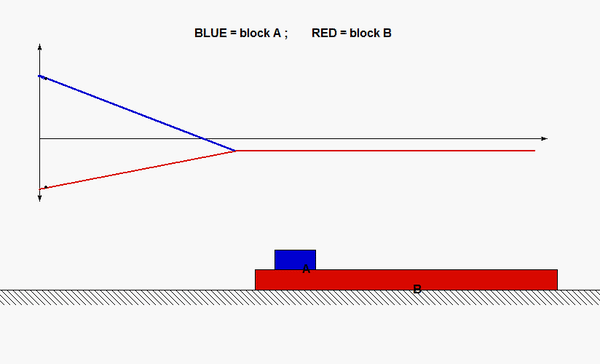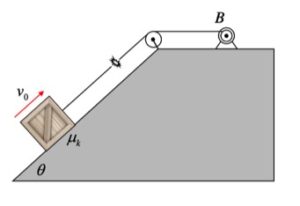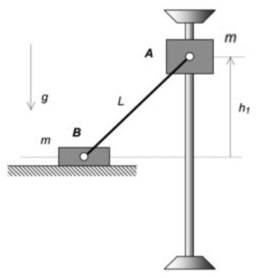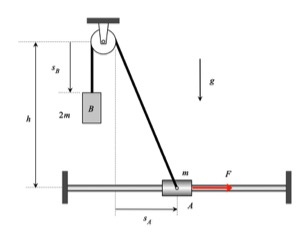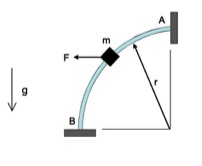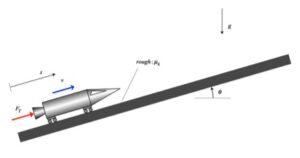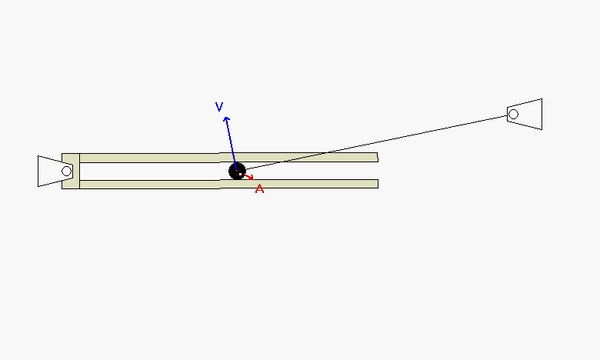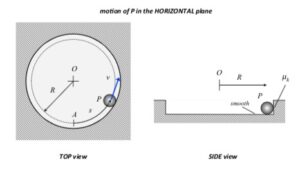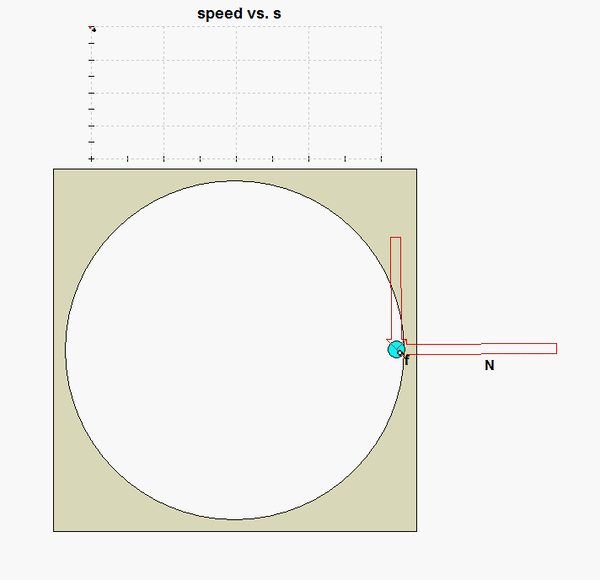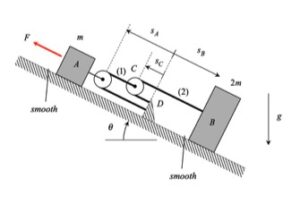| Problem statement Solution video |
DISCUSSION THREAD
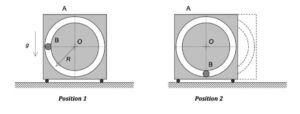
Discussion and hints:
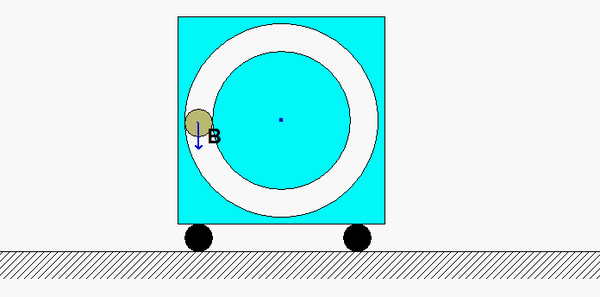
Recall the following four-step plan outline in the lecture book and discussed in lecture:
Step 1: FBD
Draw a free body diagram of the system made up of A+B.
Step 2: Kinetics (linear impulse/momentum and work/energy)
From your FBD above, what is the external force acting on the system of A+B in the horizontal direction? What does this say about the linear momentum of this system in that direction? Also, are there any non-conservative forces acting on the system of A+B? What does this say about the mechanical energy of the system?
Step 3: Kinematics
At position 2, B is moving only in the horizontal direction. There is no vertical component of velocity of B at position 2.
Step 4: Solve
Solve for the speeds of A and B from the above equations.
Any questions?

